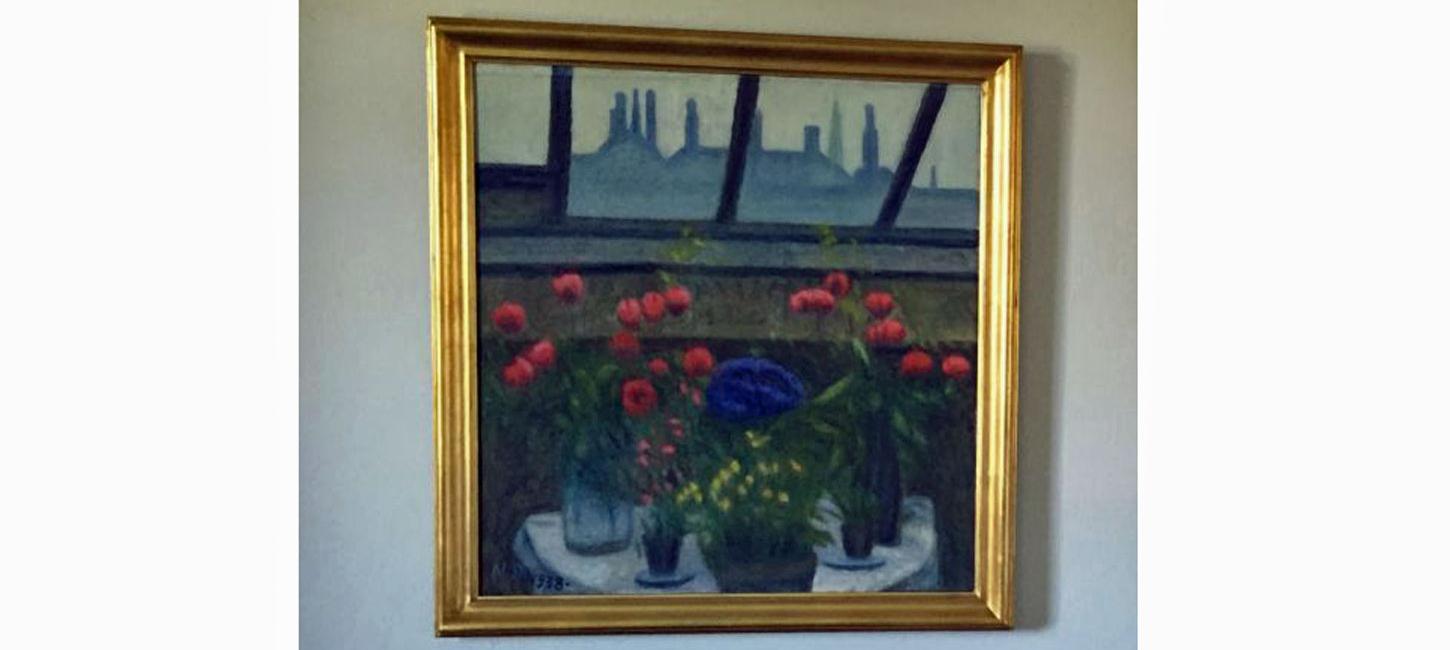
Niels Bjerre
The painter, Niels Bjerre lived from 1864 to 1942. He was born at the farm Nørrelund in Engbjerg Parish, West of Lemvig.
His childhood home was in the middle of a grand and varied landscape in West Jutland and Niels Bjerre found inspiration for his main motives here for the rest of his life. Most of Niels Bjerres paintings are painted in Westjutland.
He found that the light here was special combined with the rough nature. In the summer, he moved from Copenhagen to Westjutland, where he lived in long priods at family and friends or at the Bovbjerg Seaside hotel that belonged to his cousin, the painter Kristen Bjerre.
At Lemvig Museum you find paintings from the childhood home of Niels Bjerre and the landscapes surrounding it. In his late paintings, you will find strong tones of coulour. There is a series of paintings with motives from Lemvig, Bovbjerg and Harboøre. These have been painted over a periode of almost 50 years.
The painting of Lemvig Valgmenighedskirke and Lemvig Møllegård from 1891 is a pearl in the collection. You can still see the church as well as a part of Møllegården in the Station quarters. The open fields have been transformed into residential area.
Niels Bjerre and his family was attached to Valgmenigheden (A church congretion). As a boy he lived at Møllegården, while he attended school in Lemvig. There is a fine painting of the fisherman Josef Hav, who is painted in his living room in Harboøre in 1901 while he works focused on binding a fishing tool.
At Lemvig Museum you will find a small collection of the painters belongings. His easel stands with the last unfinished painting with a motive from Bovbjerg Lighthouse. His painters kit, his paintbrush jar and spatula is displayed with the wicker suitcase, he sent his luggage in, when he moved back and forth between Copenhagen and the West Coast.
He had a characteristic hat wit a broad shaddow and a walking stick that was used to frame the motive when he began a landscape painting. He would hold the stick horisontaly between his thumb and index fingers and in that way he could frame the motive between the shadow of the hat, the index fingers and the walking stick.
It was Niels Bjerre who introduced Jens Søndergaard to the landscape of Westjutland.